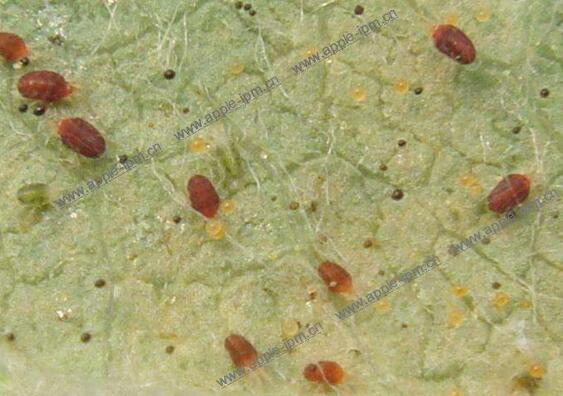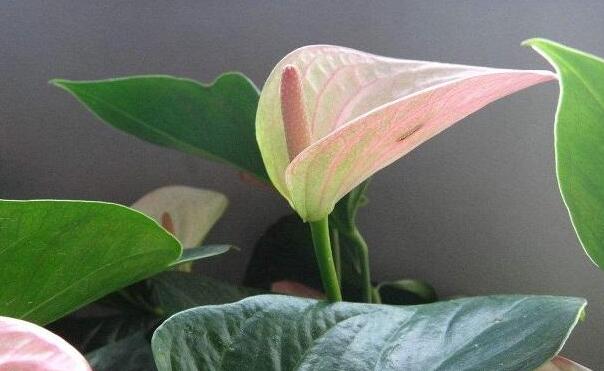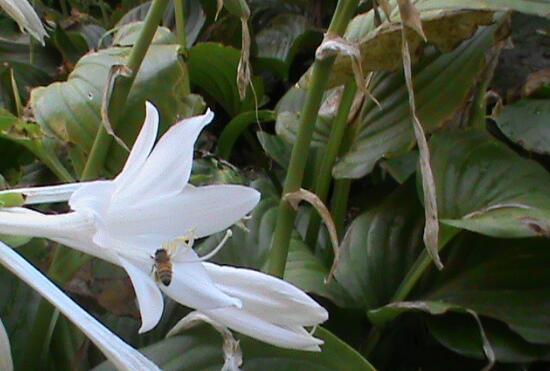Taxus disease and pest control, 3 major insect pests / 3 major diseases / prevention and treatment need to be combined
Taxus can survive on the earth more than 2.5 million years, indicating that its disease resistance is relatively strong, but with the development of potted technology, many people in the home culture, may not understand the cultivation method of Taxus or not very good conservation management, resulting in plant diseases and insect pests, and if the long insect should do? Let's take a look at the prevention and control methods of yew pests and diseases.
Control of Taxus Disease and Pest
1. Common pests of Taxus chinensis
1. Tetranychus mites

Also known as red spider, it is one of the most harmful pests to plants. It feeds on the sap of yew, often parasitizes on leaves and stems, and also falls into the soil to overwinter and lay eggs, resulting in curved marks and irregular spots on the leaves of yew.
2. Aphids
When planting other flowers, aphids are one of the most common pests. They hide in the branches and leaves of yew trees, feed on mesophyll tissue, constantly produce black spots, cause leaves to turn yellow, wither and fall off, even attract ants, and cause other pests.
3. Scale insects
It is called one of the three major pests by many flower friends, which is comparable to the harm of aphids, leaf mites, etc. It not only causes great harm but also reproduces quickly. A large number of scale insects not only cause yellow leaves and deformity, but also hinder the growth of plants. In the prevention and control of Taxus chinensis pests, scale insects need to be cleaned up as soon as possible.
Prevention and control methods: The appearance of the above three pests has a great relationship with the maintenance environment. In daily maintenance, try to keep the environment clean, clean and ventilated, avoid excessive humidity, etc., and do not water. When pests appear, they can be sprayed with carbendazim, scale must be treated and so on.
II. Common diseases of Taxus chinensis
1. Bacterial blight
Also known as dead seedlings, it is caused by Rhizoctonia solani, usually in the middle and late stages of seedling emergence, damage is the seedling stem and underground roots, the disease will appear oval dark brown spots, wilting plants during the day, return to normal at night, but not treated in time, the final plant will dry up and die.
2, white silk disease
It usually occurs in the rhizome, the damaged part will appear cortex rot, the root absorption of water and nutrients problems, resulting in smaller leaves, yellow, so that branches and leaves prematurely withered off, and some leaves will have ring-shaped brown spots.
3. Stem rot
If individual plants are not treated in time, they will infect other plants. When the disease occurs, the leaves lose their green color and begin to die and fall. Stem rot usually occurs easily in summer when the temperature is high, especially when cutting propagation is more likely.
Prevention and control methods: The soil used should be disinfected to ensure that there are no germs in the soil, increase the application of fertilizer, improve the resistance of Taxus to diseases, and ensure that the temperature is not too high in summer. When the disease occurs, drugs need to be sprayed, such as carbendazim, thiophanate-methyl WP, etc.
Control of Taxus Disease and Pest
There are 7 kinds of diseases and insect pests in the whole growth period of Taxus chinensis cutting seedlings in greenhouse, namely, blight, stem rot, white silk disease, Phytophthora, leaf mites, aphids, scale insects, etc. Among them, stem rot, white silk disease and aphids were the most harmful.
Control of stem rot of cuttings
Two months after cuttage, stem rot occurred at the base of seedlings, which began with individual plants and then expanded into whole clusters. It mainly occurs in summer and autumn high temperature season. Disease occurrence and epidemic mainly depends on the temperature in July ~ August, if the disease occurs earlier, the seedling heat resistance is weak, so the disease will be serious. Therefore, reduce the temperature of the surface layer of the seedbed soil between summer and autumn to prevent the base of the seedling stem from being burned, so as not to cause the wound to cause the invasion of germs; increase fertilizer to promote the growth of cuttings and enhance disease resistance.
Control of White Silk Disease of Cuttings
The disease usually began to occur in early June, the disease began to peak when the temperature rose to about 30℃ from July to August, the disease peaked when the temperature reached 35℃, and the disease basically stopped at the end of September. White hyphae accompanied by brown dots are produced when damaged. Control measures: strengthen management, build high beds, drain drainage; loosen soil and weed in time; apply ammonia fertilizer and organic fertilizer to promote strong seedling growth and enhance disease resistance; clean up diseased plants, fallen leaves and infected substrates in time after cuttage disease. The application of quintozene and acinitron mixed with yellow subsoil to seedbed can effectively control white silk blight of cuttings, and the control effect is more than 95%.
aphid control
Aphids are one of the main pests of cuttings of Taxus chinensis var. mairei in greenhouse. Because the perennial temperature in greenhouse is kept above 18℃, aphids do not overwinter in winter. In summer, if the outside temperature is not particularly high (38℃) and the cuttings in greenhouse have a certain leaf area, aphids can still continue to reproduce and harm. Therefore, aphids occur in greenhouse by parthenogenesis. Aphids of cuttage seedlings could be effectively controlled by spraying seedbed with aphids and lice emulsion, and the control effect was above 95%.
integrated control techniques
Greenhouse disinfection. Disinfection of greenhouses prior to cuttings is very effective.
Disinfection method:
(1) Greenhouse frame disinfection, application of trisodium phosphate, sulfur, formalin and other insecticides, disinfectant spray or fumigation greenhouse steel brackets, walkways and surrounding plastic film;
(2) Disinfection of soil and matrix, using formalin, methyl bromide and natural high temperature in summer to disinfect soil and matrix;
(3) Disinfection of drip irrigation system: nitric acid and formalin solution shall be used to wash and soak the dripper, dropper, sand filter and mother liquor tank;
(4) Disinfect the reservoir, remove impurities, sludge and clean water at the bottom of the pool, and then disinfect the reservoir with formalin or other disinfectants.
ecological control
By regulating and controlling the temperature and humidity in the greenhouse, the temperature of the greenhouse is kept at 15 - 18 DEG C at night, about 25 DEG C in the daytime, and the temperature difference between day and night is not more than 10 DEG C. In this way, the relative humidity of the greenhouse can be controlled below 90%, the leaf surface of the cutting seedling of Taxus chinensis var. mairei will not produce water film, and the pathogenic bacteria cannot invade the leaf tissue to cause disease. Heating technology is one of the effective measures to control temperature and humidity in greenhouse.
cultivation and management
Prune branches and beat old leaves in due time to prevent microclimate environment conducive to disease transmission and occurrence due to over-dense branches and leaves; timely remove residual branches and leaves of diseases and insect pests, keep the greenhouse clean, and minimize the source of bacteria and insects causing diseases and insect pests; strictly formulate and implement production operation procedures to prevent operators, visitors and production tools from becoming disseminators of diseases and insect pests.
biological control
The invention relates to a technology for controlling diseases and insect pests of Taxus chinensis cutting seedlings by applying microbial preparations and predatory or parasitic beneficial insects (i.e. natural enemies), wherein biological insecticides such as pesticides are applied to control pests such as aphids, spider mites and the like; natural enemies such as aphidophagous gall midge, peach aphidius, Chilean phytoseius and the like are used to control pests such as Taxus chinensis cutting seedlings and the like.
chemical control
On the basis of the above four control techniques, if stem rot, white silk disease and aphids still have harm, chemical pesticides or biological pesticides can be selected to control 1~2 times.
Control of Taxus Disease and Pest
The occurrence and damage characteristics of Taxus chinensis var. mairei in greenhouse were significantly different from those in open field. Therefore, new control strategies and techniques were needed to control Taxus chinensis var. mairei pests in greenhouse. In order to effectively prevent and control the diseases and insect pests of Taxus chinensis, experts from relevant departments of our city have monitored, investigated, studied and practiced the main diseases and insect pests in the whole growth period since 1975 in Sanming City, Mingxi County and other places. Comprehensive techniques such as ecological control, physical control, cultivation control, disinfection and chemical control have been adopted to establish an integrated prevention and control technical system for diseases and insect pests of Taxus chinensis cuttings in greenhouse. Obvious control effects have been achieved.
pest species
There are 7 kinds of diseases and insect pests in the whole growth period of Taxus chinensis cutting seedlings in greenhouse, namely, blight, stem rot, white silk disease, Phytophthora, leaf mites, aphids, scale insects, etc. Among them, stem rot, white silk disease and aphids were the most harmful.
Control of stem rot of cuttings. Two months after cuttage, stem rot occurred at the base of seedling stem, which began with individual plant disease and then expanded into whole cluster disease. It mainly occurs in summer and autumn high temperature season. Disease occurrence and epidemic mainly depends on the temperature in July ~ August, if the disease occurs earlier, the seedling heat resistance is weak, so the disease will be serious. Therefore, reduce the temperature of the surface layer of the seedbed soil between summer and autumn to prevent the base of the seedling stem from being burned, so as not to cause the wound to cause the invasion of germs; increase fertilizer to promote the growth of cuttings and enhance disease resistance. The control effect was 89%%, 83%%, 83%, 84%, 89%, 83%, 83%, 84%, 83%, 83%, 84%, 83%, 83%, 84%, 83%, 84%, 84%, 83%, 84%, 84%, 83%, 84%, 84%, 85%, 85%, 86%,
Control of white silk disease of cuttage seedlings. The disease usually began to occur in early June, the disease began to peak when the temperature rose to about 30℃ from July to August, the disease peaked when the temperature reached 35℃, and the disease basically stopped at the end of September. Control measures: strengthen management, build high beds, drain drainage; loosen soil and weed in time; apply ammonia fertilizer and organic fertilizer to promote strong seedling growth and enhance disease resistance; clean up diseased plants, fallen leaves and infected substrates in time after cuttage disease. The application of quintozene mixed with yellow subsoil to seedbed can effectively control white silk disease of cuttings, and the control effect is more than 95%.
Aphid control. Aphids are one of the main pests of cuttings of Taxus chinensis var. mairei in greenhouse. Because the perennial temperature in greenhouse is kept above 18℃, aphids do not overwinter in winter. In summer, if the outside temperature is not particularly high (38℃) and the cuttings in greenhouse have a certain leaf area, aphids can still continue to reproduce and harm. Therefore, aphids occur in greenhouse by parthenogenesis. 10% imidacloprid emulsion can effectively control aphids in cuttings, and the control effect is above 95%.
integrated control techniques
Greenhouse disinfection. Disinfection of greenhouses prior to cuttings is very effective. Disinfection method: (1) Greenhouse frame disinfection, spraying or fumigating steel supports, walkways and surrounding plastic films in the greenhouse with insecticides and disinfectants such as trisodium phosphate, sulfur and formalin;(2) Soil and substrate disinfection, disinfecting soil and substrate with formalin, methyl bromide and natural high temperature in summer;(3) Drip irrigation system disinfection, rinsing and soaking the dripper, dropper, sand filter and mother liquor tank with nitric acid and formalin solution;(4) Disinfect the reservoir, remove impurities, sludge and clean water at the bottom of the pool, and then disinfect the reservoir with formalin or other disinfectants.
Ecological control. By regulating and controlling the temperature and humidity in the greenhouse, the temperature of the greenhouse is kept at 15 - 18 DEG C at night, about 25 DEG C in the daytime, and the temperature difference between day and night is not more than 10 DEG C. In this way, the relative humidity of the greenhouse can be controlled below 90%, the leaf surface of the cutting seedling of Taxus chinensis var. mairei will not produce water film, and the pathogenic bacteria cannot invade the leaf tissue to cause disease. Heating technology is one of the effective measures to control temperature and humidity in greenhouse.
Cultivation management. Prune branches and beat old leaves in due time to prevent microclimate environment conducive to disease transmission and occurrence due to over-dense branches and leaves; timely remove residual branches and leaves of diseases and insect pests, keep the greenhouse clean, and minimize the source of bacteria and insects causing diseases and insect pests; strictly formulate and implement production operation procedures to prevent operators, visitors and production tools from becoming disseminators of diseases and insect pests.
Biological control. The invention relates to a technology for controlling diseases and insect pests of Taxus chinensis cutting seedlings by applying microbial preparations and predatory or parasitic beneficial insects (i.e. natural enemies), wherein biological insecticides such as pesticides are applied to control pests such as aphids, spider mites and the like; natural enemies such as aphidophagous gall midge, peach aphidius, Chilean phytoseius and the like are used to control pests such as Taxus chinensis cutting seedlings and the like.
Chemical control. On the basis of the above four control techniques, if stem rot, white silk disease and aphids still have harm, chemical pesticides or biological pesticides can be selected to control 1~2 times.
- Prev

What diseases and insect pests are there in the pink palm? what to do if the powder palm grows worms / strengthen maintenance and spray drugs
The probability of diseases and insect pests in pink palm is very small, but often because of some bad breeding habits, bacteria and pests appear on the plant or in the soil, which is harmful to its health. What are the diseases and insect pests of pink palm? The following editor will answer for you one by one.
- Next

What should we do if the late fragrant jade grows insects? disease and pest control of late fragrant jade / 4 insects and 2 diseases are sprayed with medicine
Evening fragrant jade, as the name of the flower, it blossoms at night, the flower is full of fragrance, is a very beautiful flower, raised by many flower friends at home. However, in the process of breeding, due to various reasons, the evening fragrant jade will inevitably be attacked by diseases and insect pests, so what about the night fragrant jade worms? The following are the pest control of 6 kinds of late fragrant jade.
Related
- Fuxing push coffee new agricultural production and marketing class: lack of small-scale processing plants
- Jujube rice field leisure farm deep ploughing Yilan for five years to create a space for organic food and play
- Nongyu Farm-A trial of organic papaya for brave women with advanced technology
- Four points for attention in the prevention and control of diseases and insect pests of edible fungi
- How to add nutrient solution to Edible Fungi
- Is there any good way to control edible fungus mites?
- Open Inoculation Technology of Edible Fungi
- Is there any clever way to use fertilizer for edible fungus in winter?
- What agents are used to kill the pathogens of edible fungi in the mushroom shed?
- Rapid drying of Edible Fungi

